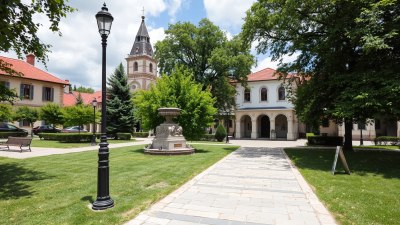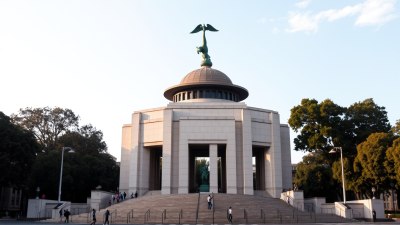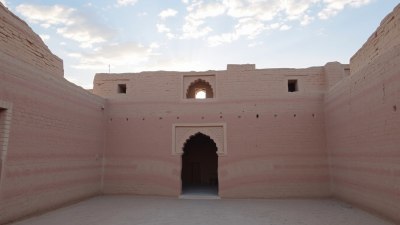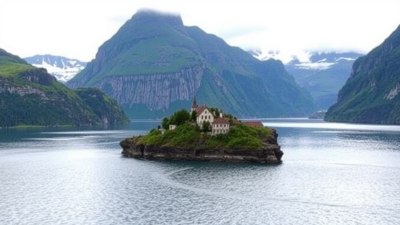The Bones of the Border in Sombor, Serbia
Discover the historical significance of Sombor, Serbia, and its intriguing connection to the 'Bones of the Border.'

Image created with Flux Schnell
Sombor, a picturesque town in northern Serbia, is often overlooked but holds a rich tapestry of history and culture. Nestled near the banks of the River Bačka, Sombor has been a silent witness to the ebb and flow of various civilizations, each leaving a mark on its land. Among the many intriguing tales of Sombor, the story of 'The Bones of the Border' stands out, intertwining history with folklore, and reflecting the profound significance of this region.
The Historical Context of Sombor
Founded in the 18th century, Sombor first emerged as an important administrative center in the Austro-Hungarian Empire. Its architecture is a blend of Baroque and Neoclassical styles, with wide boulevards and green parks that give it a quaint charm. The town thrived as a commercial hub, attracting merchants and settlers from various parts of Europe. However, it was not just its economic significance that shaped Sombor, but also its cultural identity, enriched by diverse influences over the centuries.
The 'Bones of the Border'
The phrase 'Bones of the Border' refers to the remnants of different cultures and peoples that once inhabited the borderlands surrounding Sombor. This term symbolizes both the physical remains of those who lived and died in these territories and the transient nature of borders themselves. The region has served as a crossing point for numerous armies, traders, and refugees, leading to a mingling of cultures and the eventual establishment of borders that often disregarded historical ties.
Archaeological Discoveries
Archaeological studies around Sombor have unearthed various artifacts that date back to prehistoric times, indicating that this area has been a significant location for human settlement for millennia. Items such as pottery, tools, and skeletal remains have been discovered at numerous sites, shedding light on the lives of ancient communities. The most captivating finds related to the 'Bones of the Border' are the skeletal remains of individuals buried in mass graves, believed to be victims of past conflicts over territorial disputes. These discoveries highlight the region's turbulent history and bring to light the stories of those who lived on the border.
Folklore and Legends
The tales surrounding 'The Bones of the Border' are not solely rooted in history but also in local folklore. Elders tell stories of restless spirits wandering the region, seeking justice or peace for the hardships they endured in life. These legends are preserved in songs and tales shared among locals, reminding them of the sacrifices made by their ancestors. Festivals celebrating these stories have become an integral part of Sombor's cultural calendar, allowing residents to honor their history while also fostering a sense of community.
Border Dynamics and Identity
The shifting borders of the region have also played a significant role in shaping the identity of Sombor's inhabitants. Historically part of various empires, the locals have developed a unique blend of traditions that reflect their diverse ancestry. Languages, customs, and culinary practices have coalesced to form a vibrant cultural mosaic. The impact of the recent Yugoslav wars and the subsequent restructuring of borders have also influenced the community's sense of belonging and identity, further complicating the narrative of 'The Bones of the Border.'
The Influence of Conflict
The 20th century witnessed multiple conflicts that devastated the region, altering demographics and cultural landscapes. The aftermath of these conflicts left behind not just material destruction but a deep emotional and psychological impact on the populace. The stories of the 'Bones of the Border' encompass the struggles endured by families torn apart as borders shifted, often leaving them in a perpetual state of uncertainty and loss. Recognizing these narratives is crucial in addressing the legacy of conflict within contemporary society.
Tourism and Heritage
In recent years, there has been a push to promote Sombor as a destination for cultural tourism. The stories of 'The Bones of the Border' have gained recognition, becoming part of a broader initiative to preserve and share the town's heritage. Guided tours showcasing archaeological sites, museums displaying artifacts, and festivals celebrating local traditions are now common aspects of the tourism landscape. Visitors are encouraged to engage with the local community, fostering a deeper understanding of the historical context behind the tales of the border.
Educational Initiatives
Local institutions have also taken it upon themselves to educate younger generations about the significance of Sombor's history. Workshops, lectures, and cultural exchanges aim to preserve the stories of 'The Bones of the Border' and ensure that the lessons learned from the past continue to resonate. Engagement with history is not merely an academic pursuit in Sombor; it is seen as essential for fostering a sense of unity and respect among the diverse communities that call this town home.
Artistic Expressions
The themes surrounding 'The Bones of the Border' have inspired numerous artists, writers, and musicians in Sombor. Art installations, poetry, and music often reflect the intertwined history, folklore, and identity that stem from the region's complex past. These artistic expressions serve as a medium for dialogue, reflection, and healing, allowing the community to process their collective memory while also inviting outsiders to participate in their narrative.
Reflecting on the Past
Ultimately, 'The Bones of the Border' in Sombor serves as a poignant reminder of the intricate interplay between history and identity. The skeletal remains of those who once inhabited this region are not merely relics of the past; they embody the struggles, sacrifices, and resilience of communities across time. By acknowledging these stories, Sombor not only honors its heritage but also paves the way for healing and growth. As visitors and locals alike explore the history embedded within the land, they are reminded that the borders may shift, but the essence of human experience remains timeless.











